Giant Planet Magnetospheres
Large-scale Magnetospheric Structure
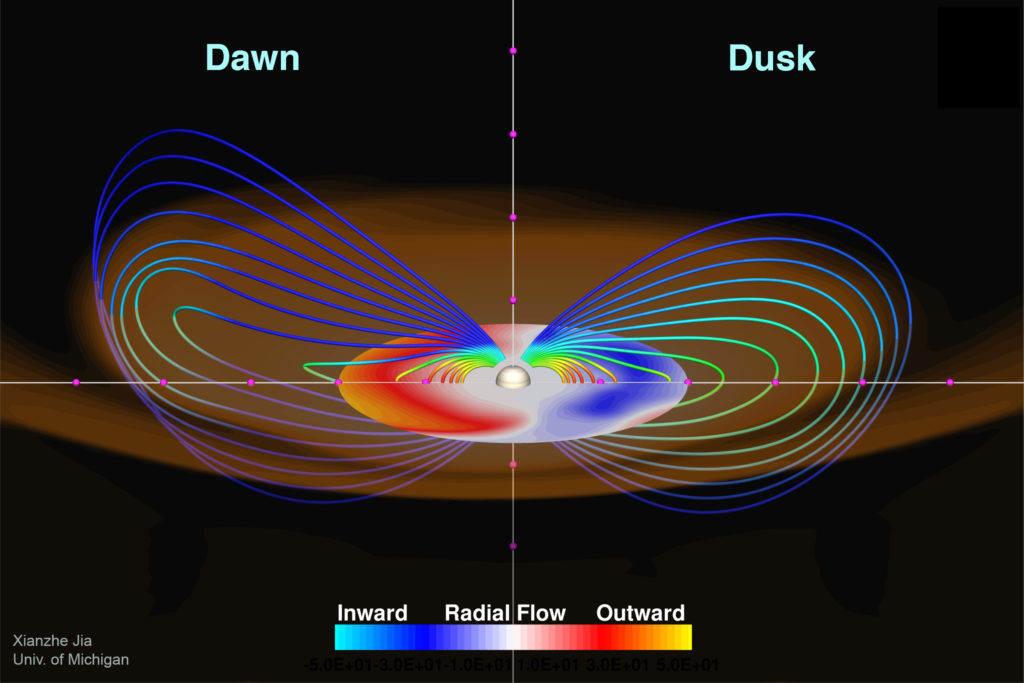
The magnetospheres of the gas giant planets, Jupiter and Saturn, are fundamentally different in many respects from the magnetospheres of the terrestrial planets due to their rapid planetary rotation and the dominant internal plasma sources arising from their moons. We develop and apply global magnetohydrodynamics simulation models to the giant planet magnetospheres to characterize their large-scale magnetospheric structure, such as the magnetospheric configuration, plasma circulation, and current systems, and to understand how the solar wind in the outer solar system influences these rapidly rotating magnetospheres.
Global Dynamics

Like at Earth and many other planetary bodies, dynamical processes in the giant planet magnetospheres often involve magnetic reconnection. Using the global MHD models developed here at the Univ. of Michigan, we study both internally and externally driven processes that produce reconnection in the giant planet magnetospheres, and characterize their impact on the global magnetospheric environment.
Saturn’s Magnetospheric Periodicities
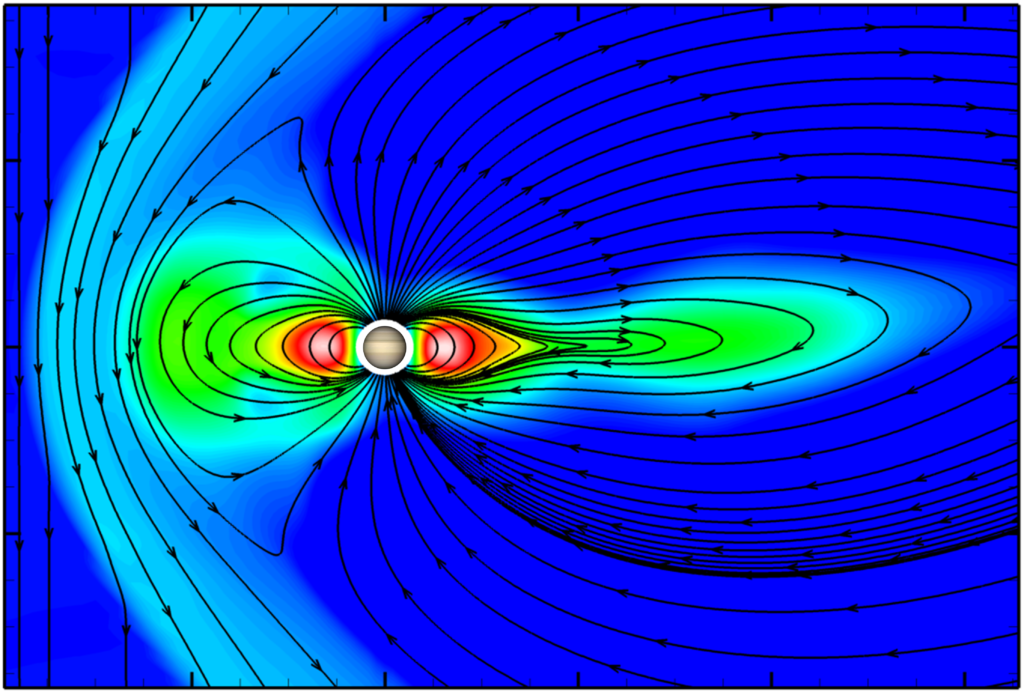
Saturn appears to possess a highly axially symmetric internal magnetic field, but yet its magnetosphere exhibits periodic modulations with periods close to the planetary rotation period in a host of magnetospheric phenomena, including magnetic field oscillations, plasma density, energetic particle fluxes, ENAs, and the auroral properties. We have been developing global magnetosphere models to understand the response of Saturn’s magnetosphere to the driving source of the periodicity. In particular, we have developed an atmospheric vortex model in which heuristic vortical flow structures are imposed in the upper atmosphere and ionosphere that generate rotating field-aligned currents, which through interaction with magnetospheric plasma produce periodic variations in a variety of magnetospheric properties.
Solar Wind Interaction with Mercury’s Magnetosphere
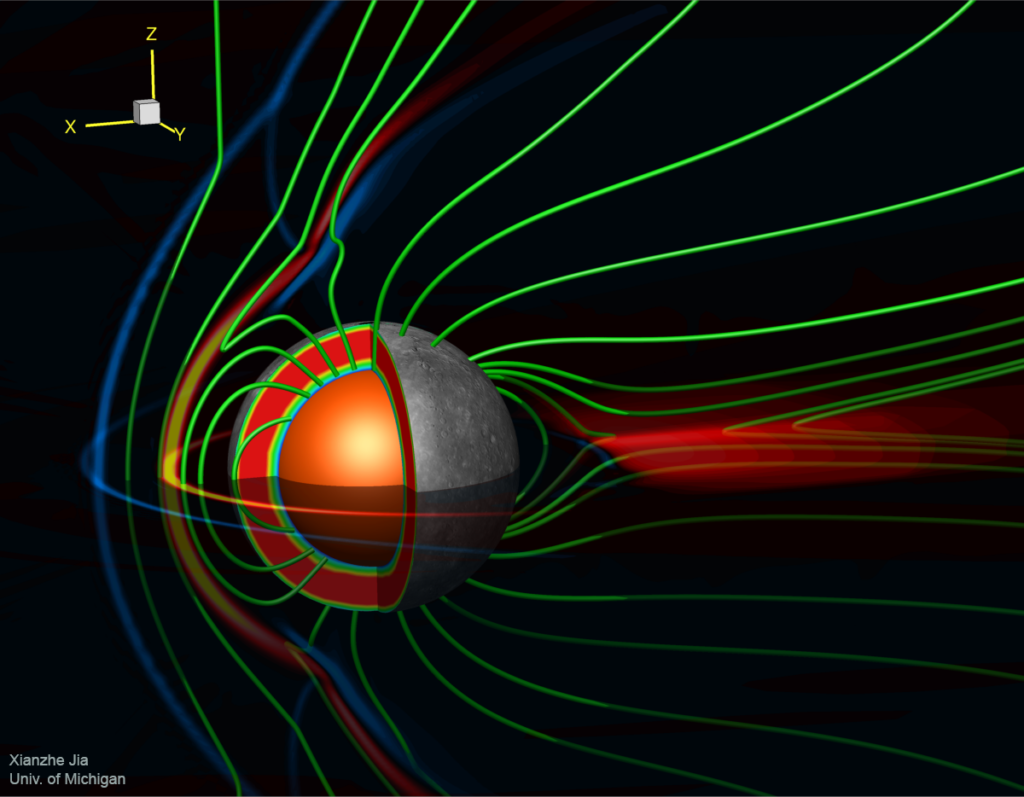
Observations from the Mariner-10 and MESSENGER spacecraft have well established that Mercury possesses a small magnetosphere that results from the interaction between the solar wind and the planet’s intrinsic magnetic field. The magnetospheric interaction at Mercury is similar to that at Earth in many ways. However, a unique aspect of Mercury’s magnetosphere that distinguishes itself from the Earth’s is the presence of a large-size conducting core. The induction effect at the conducting core combined with intense magnetopause reconnection as observed by MESSENGER lead to a complex interplay that affects the way in which Mercury responds to variations of the solar wind conditions. We have developed a global MHD model with coupled planetary interior and are applying the model to Mercury to understand this complex process and its consequences on Mercury’s space environment.
Plasma and Magnetic Environment of Planetary Moons
Europa and the Clipper Mission
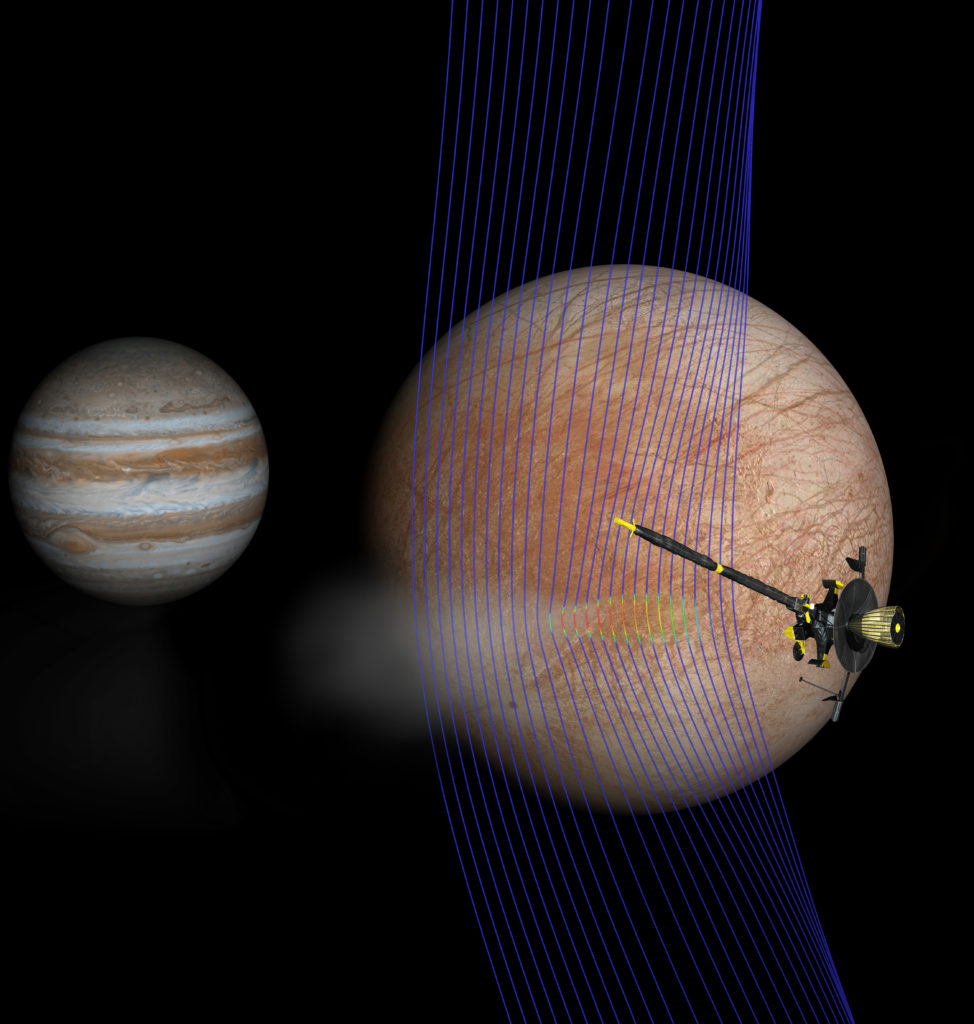
Jupiter’s moon, Europa, has been discovered during the Galileo mission to harbor a global sub-surface ocean based on measurements of the magnetic field and surface properties. This discovery has led Europa to become one of the primary targets of deep space exploration because of its potential habitability. A re-analysis of the Galileo magnetic field and plasma wave data by Jia et al. (2018) has yielded the first in-situ evidence of a plume erupting from Europa’s surface into space (NASA Press Release). NASA’s Europa Clipper mission, scheduled to launch in 2024, will conduct a large number of close flybys of the moon to acquire both in-situ and remote sensing measurements that would allow for detailed characterization of Europa’s interior structure, surface features and composition, as well as its atmosphere and space environment. Prof. Jia is Deputy Team Leader for the ECM (Europa Clipper Magnetometer) team and Co-Investigator on the PIMS (Plasma Instrument for Magnetic Sounding) team of the Europa Clipper mission. Prof Jia’s group develop advanced models of the plasma interaction with Europa and its atmosphere to characterize the plasma and magnetic environment surrounding the moon in support of the magnetic induction experiment on the Europa Clipper mission.
Ganymede and the JUICE Mission
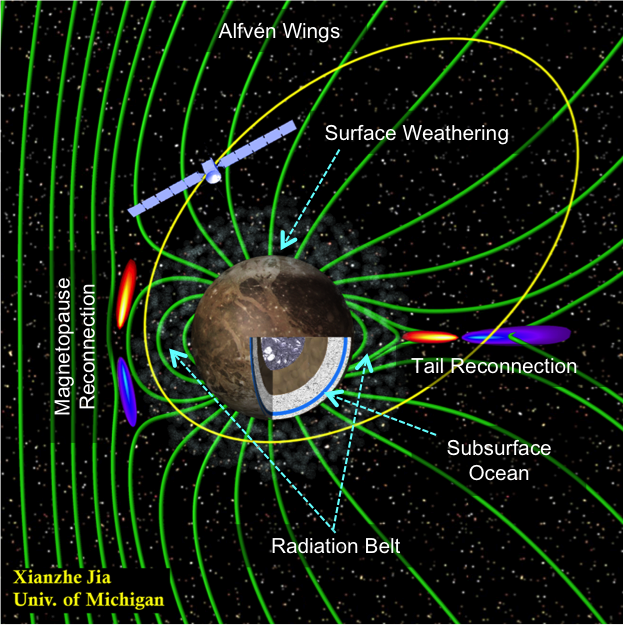
Ganymede, the largest moon in the solar system, possesses a strong intrinsic magnetic field that gives rise to a mini-magnetosphere through interaction with Jupiter’s magnetospheric plasma. Ganymede’s magnetosphere provides a natural laboratory for studying a variety of fundamental space plasma processes, such as magnetic reconnection, aurora generation and space weathering. We have been developing global magnetosphere models, including both MHD and MHD with Embedded Particle-in-Cell (MHD-EPIC) models, for Ganymede to characterize its magnetic and plasma environment. The Jupiter ICy Moon Explorer (JUICE) mission, which successfully launched in April 2023 and is scheduled to arrive at Jupiter in 2031, will orbit the moon to sample key regions of its magnetosphere and to obtain measurements that would allow for determination of the interior structure, especially the characteristics of its putative sub-surface ocean. Prof. Jia is Co-Investigator on the PEP (Particle Environment Package), J-MAG (Magnetometer), and RPWI (Radio and Plasma Wave Instrument) teams of the JUICE mission.
